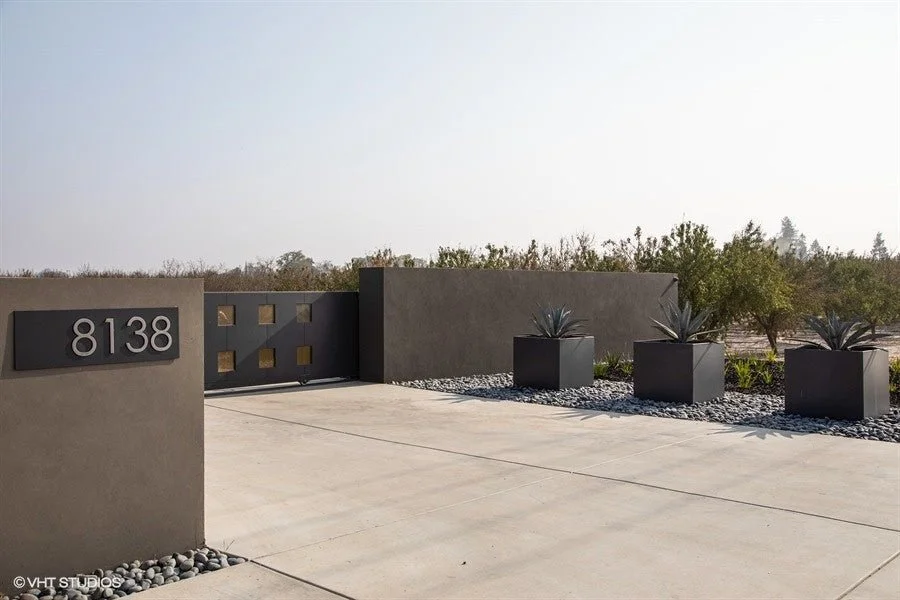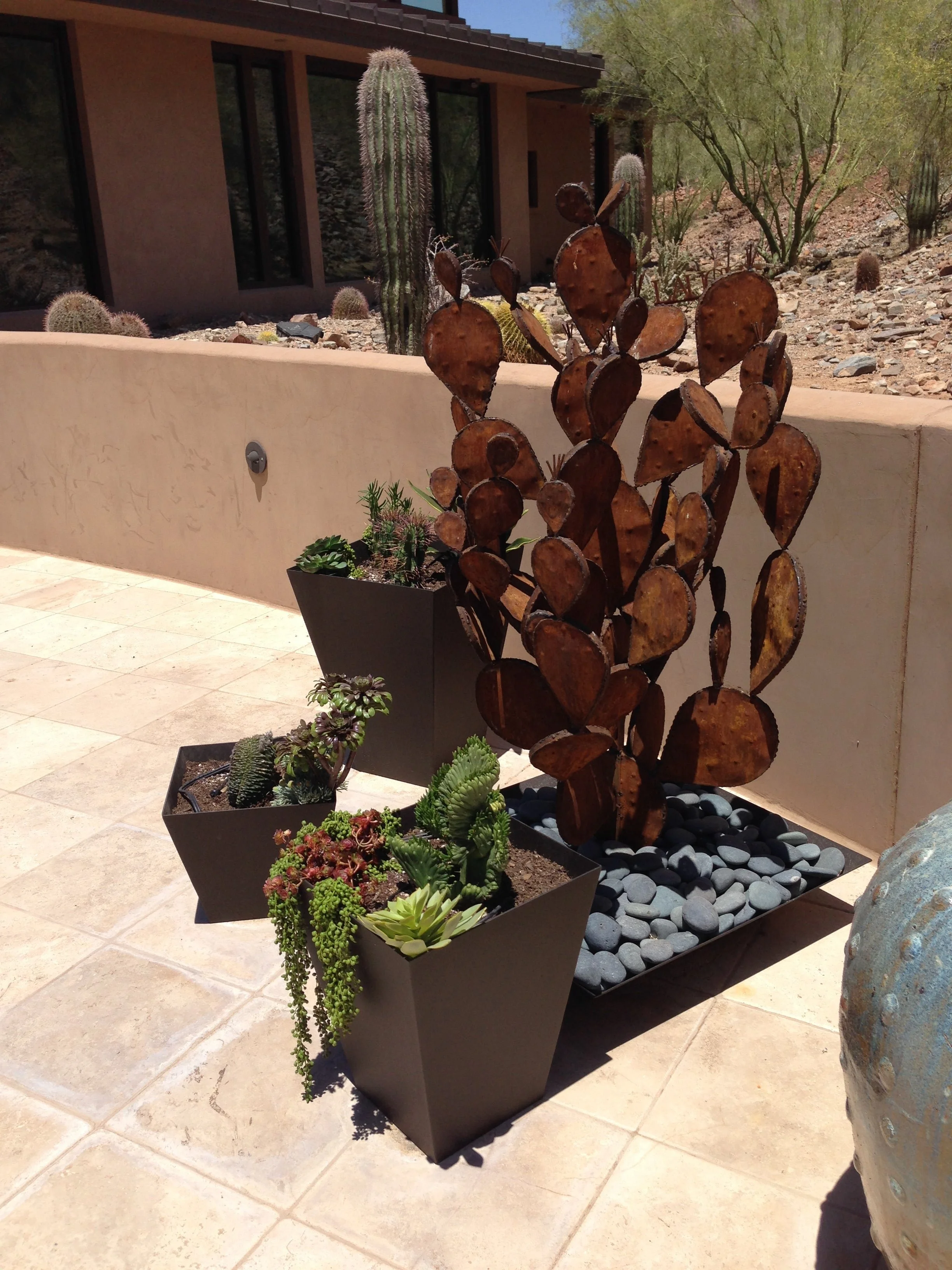Xeriscaping with Planters
Around the globe, water resources continue to dwindle. That’s why so many residential and commercial property owners are landscaping with water-conscious solutions like xeriscaping.
What Is Xeriscaping?
Xeriscaping is a practice within landscape design that aims to reduce or eliminate the need for irrigation. Used often in arid regions and desert climates, xeriscaping uses little or no water beyond what nature produces.
Guiding principles of xeriscaping include:
Planning and design
Conscientious irrigation
Selecting native plants that can survive dry spells without relying on external water sources
Many people mistake xeriscaping to mean they have to sacrifice color for a dry, sandy, or rocky look. Not only can skilled landscape designers achieve beautiful results with xeriscaping, but they can also satisfy customer demands for sustainable and water-conscious planting solutions.
Panayoti Kelaidis, senior curator and director of outreach at the Denver Botanic Gardens, calls xeriscaping “a doorway to intelligent gardening.”
According to Kelaidis, “In a lot of traditional landscapes, the plants are on life support. If you cut that life support, you’re going to lose the plants. Using xeriscape is like living a healthy life.”
Modern Elite Cube Planter at Private Residence
Conserving Water with Xeriscaping
Access to water is challenging in many areas.
In Novato, California, the water department offered residents extra reductions in their water bills if they converted traditional lawns to xeriscaping. The city estimated that each property that took advantage of this offer saved 120 gallons of water a day. (1)
Denver was one of the first urban areas to benefit from xeriscaping.
In the 1980s, droughts and exploding populations in Denver caused water to become an expensive and limited resource. Accordingly, Denver’s water management department urged residents to use less of the city's drinkable water for watering lawns and gardens.
With xeriscaping, you don’t need much water to design a beautiful landscape. By replacing thirsty lawns with vegetation appropriate for the local climate and by incorporating planters that create vertical interest, xeriscaping proves that nothing is impossible in landscape design.
But some design clients won’t want to completely eliminate lawns. That’s fine. Xeriscaping can benefit those clients too. It’s possible to keep a portion of the property covered in grass. But you can then irrigate the lawn so runoff can hydrate other plants instead of going to waste in the street.
Modern Elite Planters at Private Residence
What Are the Benefits of Xeriscaping?
In addition to conserving water, xeriscaping has many other benefits, including:
Aesthetics. With the right planning, a xeriscaped landscape can be gorgeous.
Minimal maintenance. Minimal care is a major benefit of incorporating drought-tolerant plants that generally grow at a slower pace. This results in the need for less pruning and weeding.
Sustainability. Most xeriscaped gardens don’t require fertilizer.
Pest resistant. Most plants used in xeriscaping are typically resistant to pests and disease.
How to Pick the Right Plants for Xeriscaping
Xeriscapes are often designed around plants native to a particular area, so they will naturally vary.
Consider the following general tips when making your choices:
Seek out plants that provide seasonal interest.
Look beyond plants that flower and consider texture and foliage color.
Be sure the plant can tolerate hot and dry conditions.
Annuals that work well include strawflowers, zinnias, marigolds, and salvia verbenas. Several perennials — like lavender, coneflowers, and shasta daisies — work well in xeriscaping too.
Planters as an Element in the Xeriscape
Whether your client chooses to have a small patch of grass or to eliminate the lawn altogether, incorporating focal points — like a planter — in your xeriscape will make it more aesthetically pleasing.
Plus, using planters rather than growing plants in the ground helps to conserve water, since planter-grown plants produce less water waste.
Modern Elite Tapered Planters at Private Residence
How to Choose the Right Planters for Xeriscaping
When incorporating planters into your xeriscape, think of the planter itself as an art piece rather than just a box that holds plants. By mixing planters into your xeriscape, not only will you add height and interest, but you’ll turn heads in the process.
Of course, there are also more practical considerations.
First, opt for a planter that accommodates watering accessories since you’ll need to water in the first few years after planting.
Next, when choosing a planter for your xeriscape project, you’ll first want to carefully consider the planter material:
Since the entire purpose of xeriscaping is waste reduction, you’ll naturally want to look for materials that will last.
Powder-coated aluminum planters and weathering steel are the best materials for xeriscaping.
In desert areas where xeriscaping is especially popular, there will be significant sun exposure. So be sure that the finish on your planter is durable enough.
Examples of Xeriscaping with Planters
Existing xeriscapes can be elevated by adding planters. Or planters can be a simple first step toward creating a larger xeriscape plan.
We hope these images provide you with inspiration:
Planter Experts
When your commercial or residential clients want progressive, functional, and sustainable design solutions, a stunning xeriscape could be the perfect answer.
If you’ve got questions about the right planters for your xeriscape project, request a quote today. Our experts will be happy to help you find the perfect fit.
(1) https://education.nationalgeographic.org/resource/xeriscaping/




